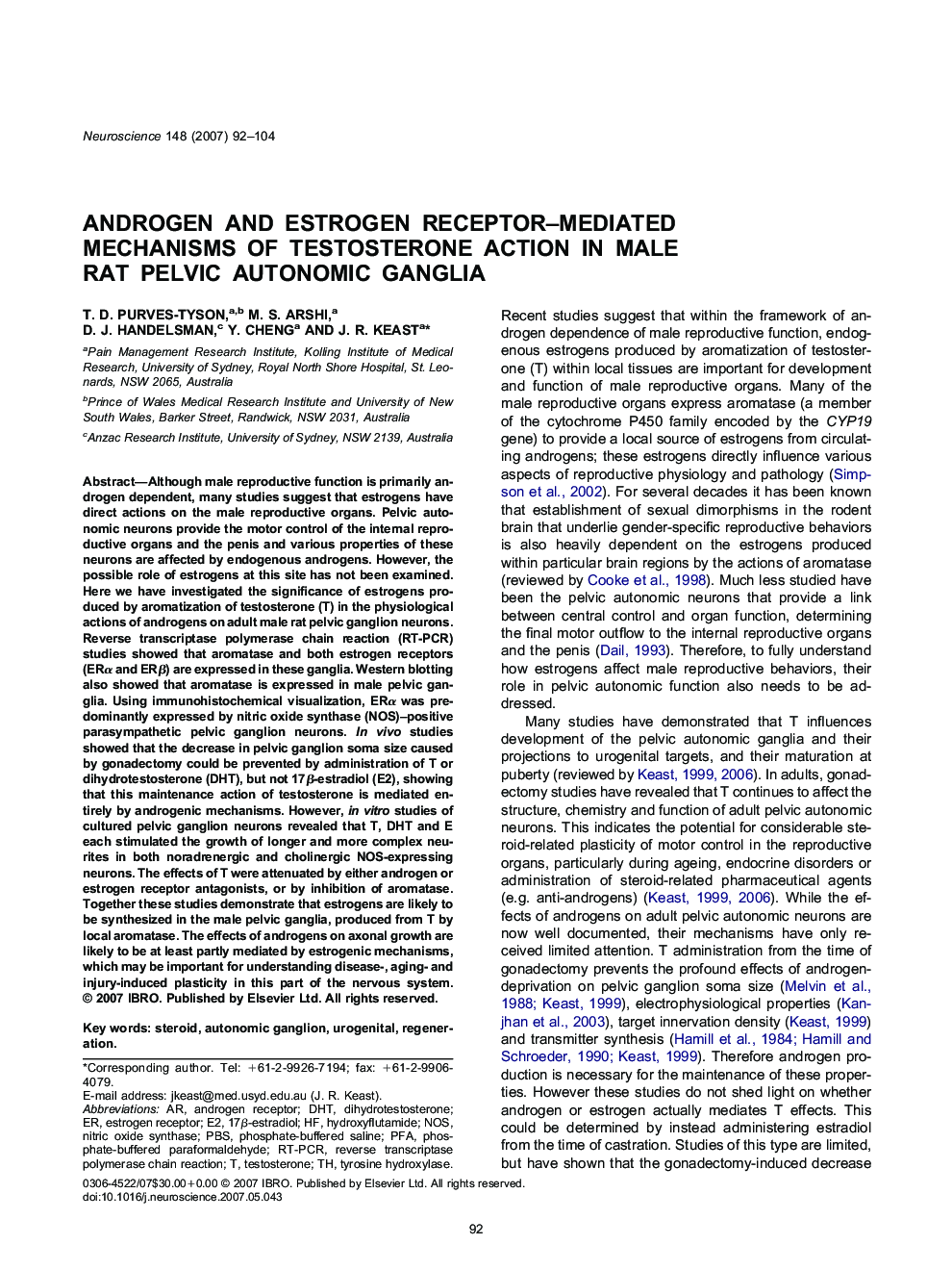| Article ID | Journal | Published Year | Pages | File Type |
|---|---|---|---|---|
| 6278612 | Neuroscience | 2007 | 13 Pages |
Abstract
Although male reproductive function is primarily androgen dependent, many studies suggest that estrogens have direct actions on the male reproductive organs. Pelvic autonomic neurons provide the motor control of the internal reproductive organs and the penis and various properties of these neurons are affected by endogenous androgens. However, the possible role of estrogens at this site has not been examined. Here we have investigated the significance of estrogens produced by aromatization of testosterone (T) in the physiological actions of androgens on adult male rat pelvic ganglion neurons. Reverse transcriptase polymerase chain reaction (RT-PCR) studies showed that aromatase and both estrogen receptors (ERα and ERβ) are expressed in these ganglia. Western blotting also showed that aromatase is expressed in male pelvic ganglia. Using immunohistochemical visualization, ERα was predominantly expressed by nitric oxide synthase (NOS)-positive parasympathetic pelvic ganglion neurons. In vivo studies showed that the decrease in pelvic ganglion soma size caused by gonadectomy could be prevented by administration of T or dihydrotestosterone (DHT), but not 17β-estradiol (E2), showing that this maintenance action of testosterone is mediated entirely by androgenic mechanisms. However, in vitro studies of cultured pelvic ganglion neurons revealed that T, DHT and E each stimulated the growth of longer and more complex neurites in both noradrenergic and cholinergic NOS-expressing neurons. The effects of T were attenuated by either androgen or estrogen receptor antagonists, or by inhibition of aromatase. Together these studies demonstrate that estrogens are likely to be synthesized in the male pelvic ganglia, produced from T by local aromatase. The effects of androgens on axonal growth are likely to be at least partly mediated by estrogenic mechanisms, which may be important for understanding disease-, aging- and injury-induced plasticity in this part of the nervous system.
Keywords
Related Topics
Life Sciences
Neuroscience
Neuroscience (General)
Authors
T.D. Purves-Tyson, M.S. Arshi, D.J. Handelsman, Y. Cheng, J.R. Keast,
